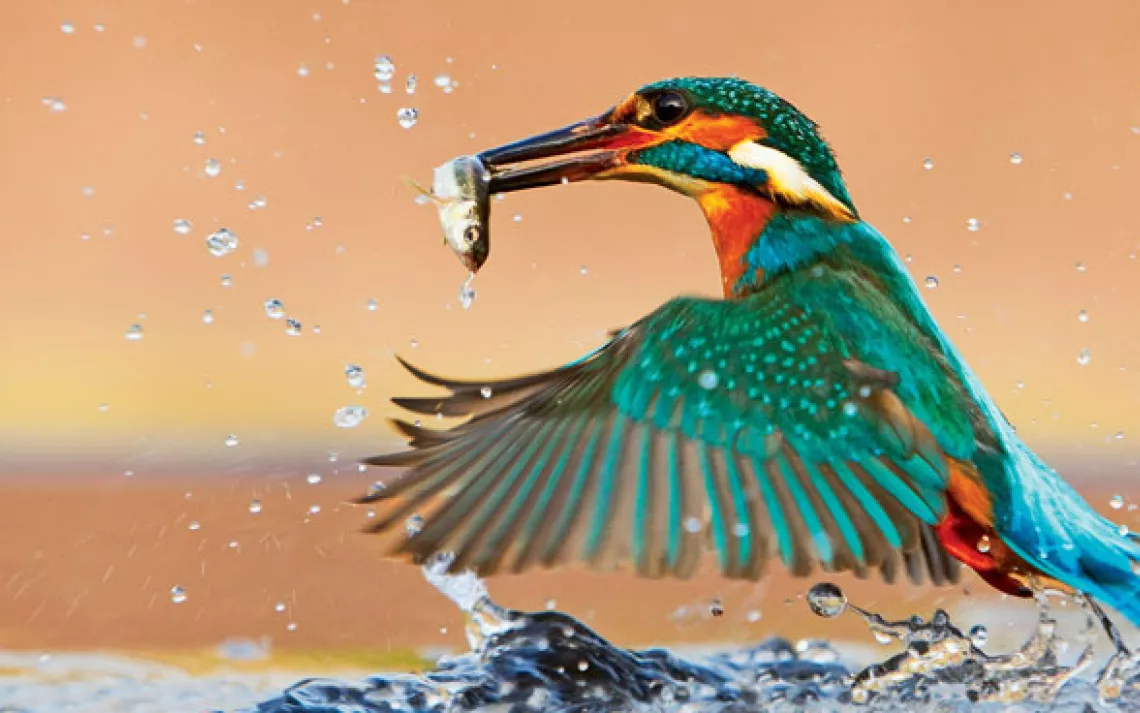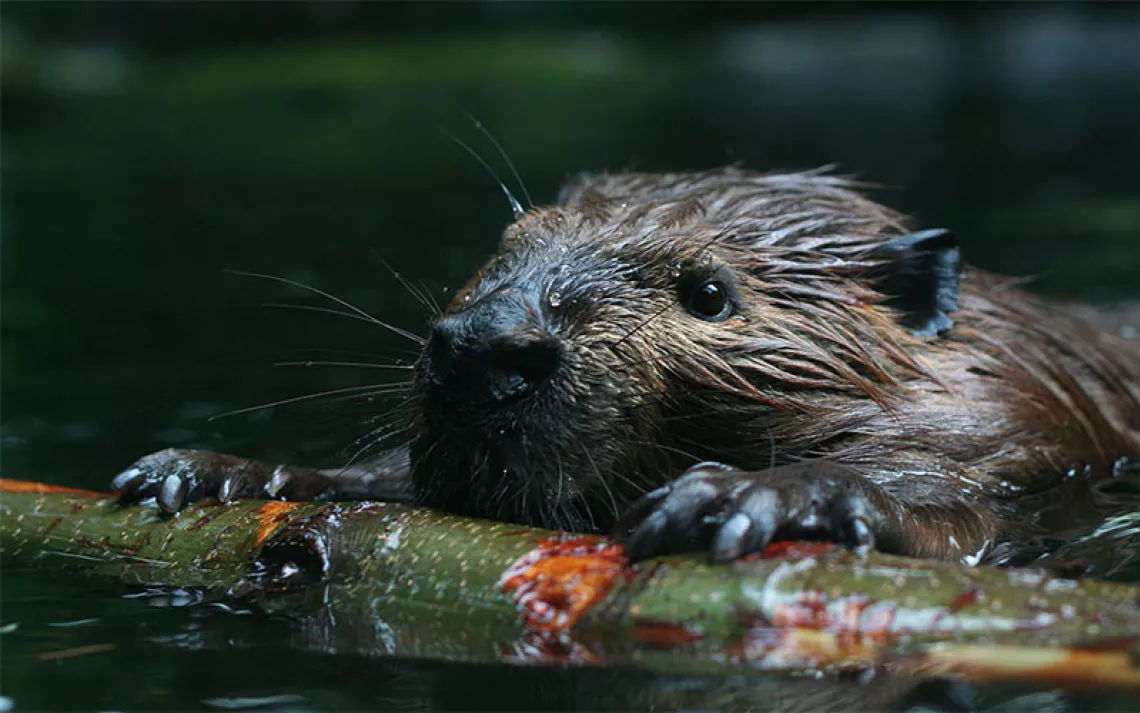Kingfisher
With this minnow, I thee wed.

Danny Green/Nature Picture Library
In ancient times, the kingfisher, or halcyon (Alcedo atthis), was believed to build floating nests on the open sea at the winter solstice, during which time the waters would miraculously become calm and navigable. Pliny the Elder cites this story as the origin of the term "halcyon days." In reality, kingfishers nest in holes in riverbanks, where they hide their jelly bean-size eggs. These birds are prodigious fishers, and luckily so, as their young require some 2,000 meals before they fledge. Courting males also bring "engagement fish" to potential mates, politely offering them headfirst for the females to swallow whole. This piscine appetite makes kingfishers a good indicator of ecosystem health; water pollution is a major threat to some species. Even their nests, reported Pliny, "are formed of sharp fish bones," and that much he got right: Rather than use down or twigs, kingfishers pad their homes with regurgitated fish bones, a fitting abode for a life on, and in, the water.
 The Magazine of The Sierra Club
The Magazine of The Sierra Club







